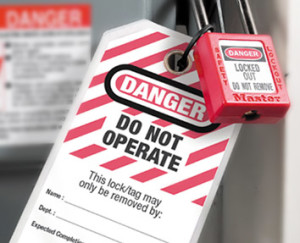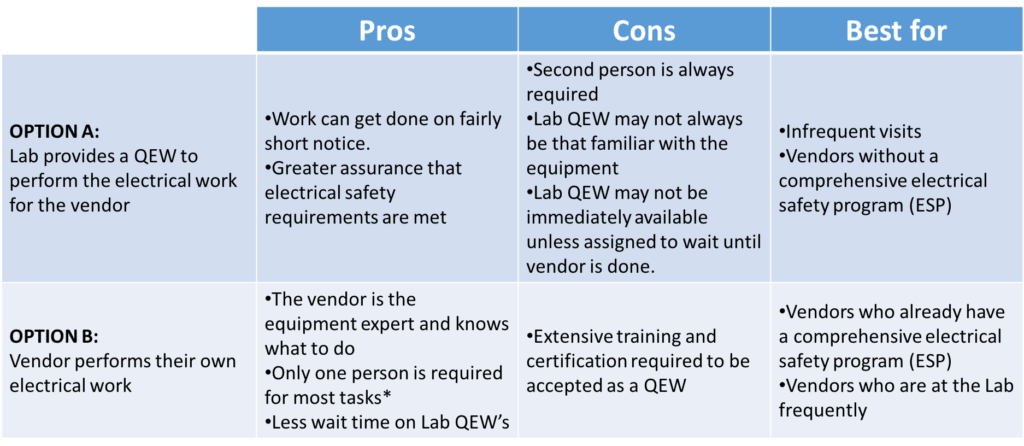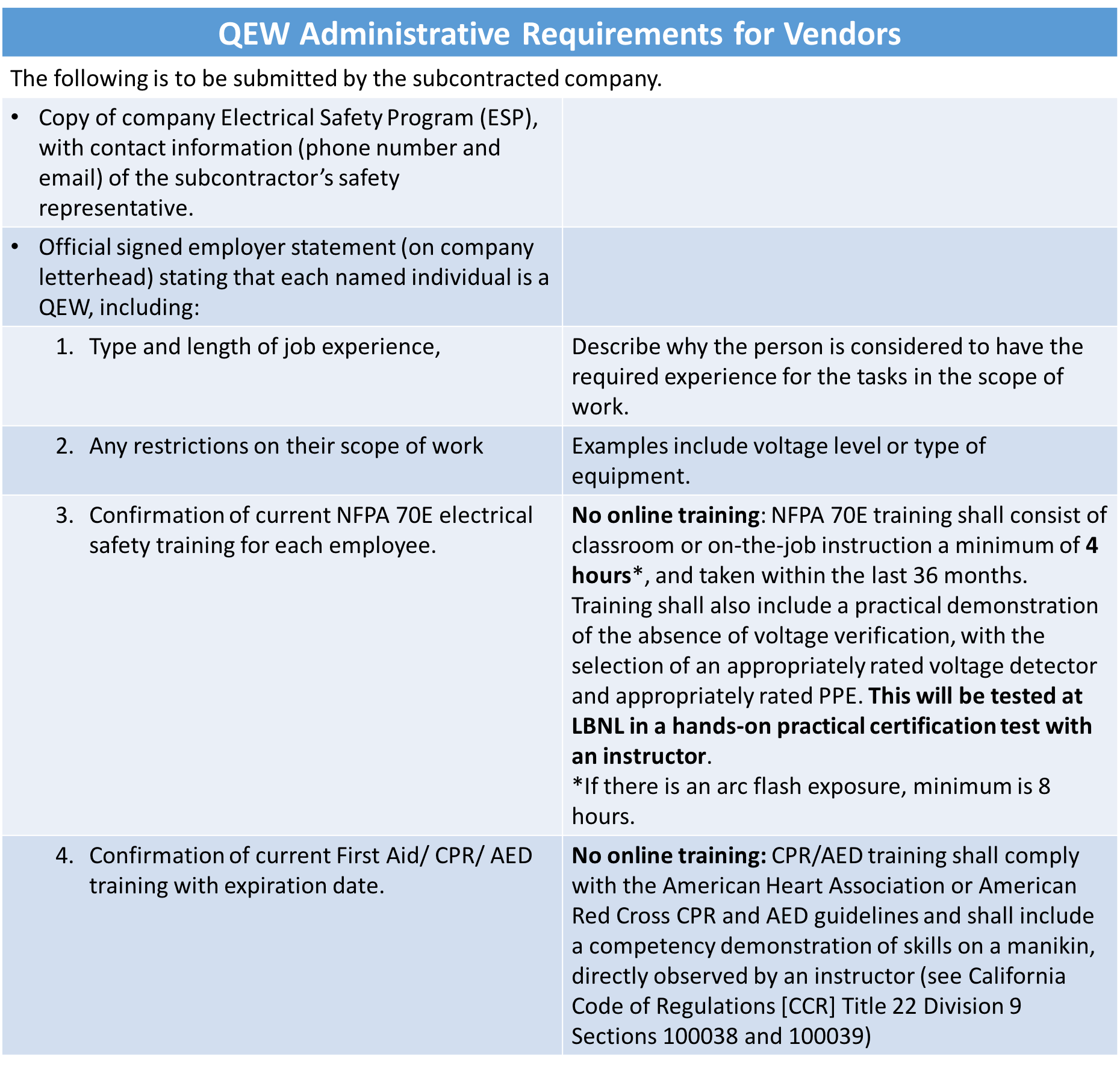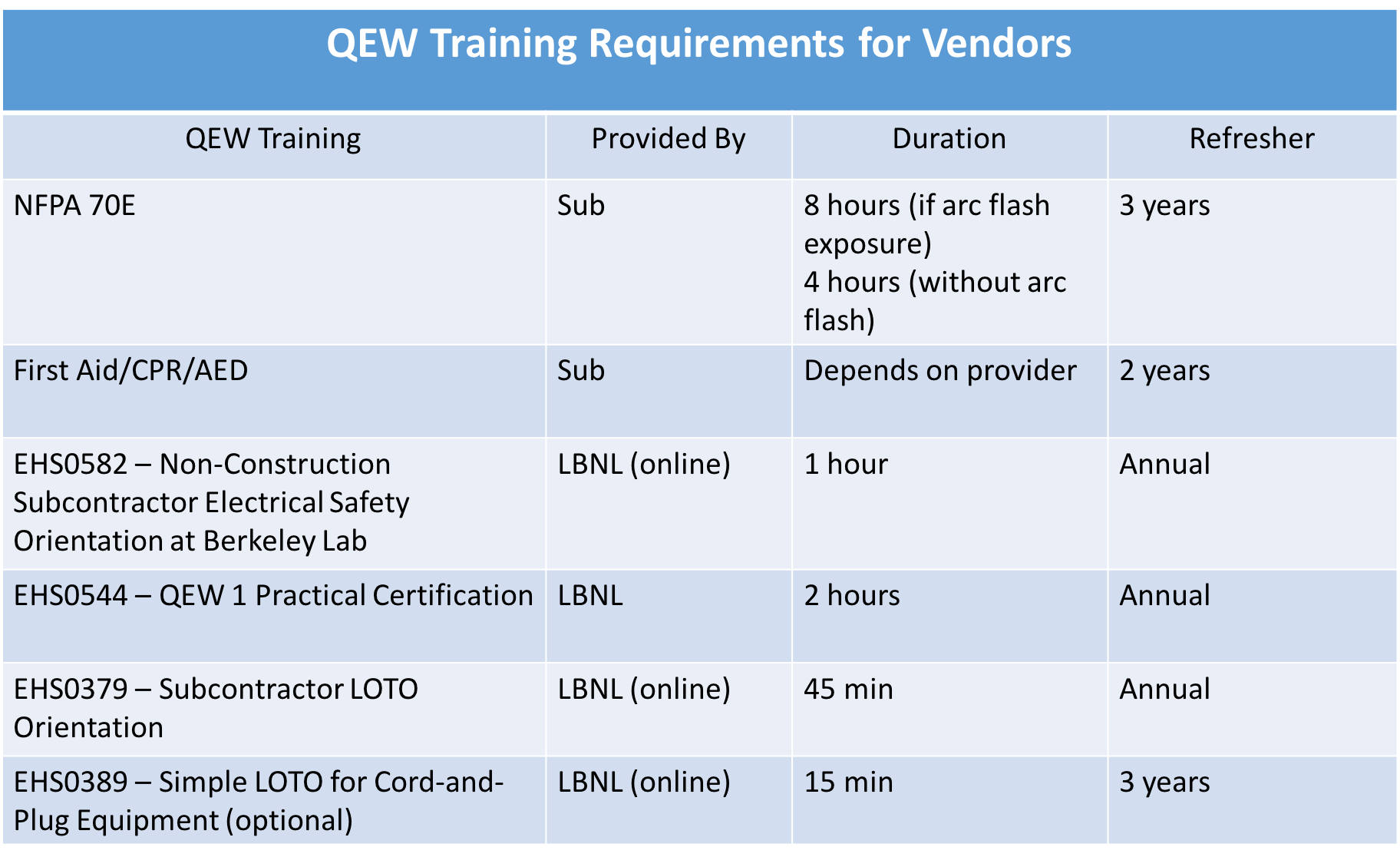Subcontractor Job Hazard Analysis (sJHA)
All hands-on work performed at Berkeley Lab facilities, or at facilities owned or leased by Berkeley Lab, by non-construction subcontractors, vendors, and affiliates who are not under direct supervisory control of Laboratory personnel must have a Subcontractor Job Hazard Analysis (sJHA) completed by the host division. The purpose of the sJHA is to document the scope of work to be performed, and determine what hazards and controls should be implemented. For a quick guide pamphlet to this process, click here.
Vendor Lockout/Tagout
 Electrical work generally requires Lockout/Tagout at some point. Subcontractor Lockout/Tagout requirements can be found here:
Electrical work generally requires Lockout/Tagout at some point. Subcontractor Lockout/Tagout requirements can be found here:
Getting Electrical Work Done
Any work that involves exposure to electrical hazards must be carefully evaluated. If the vendor is planning to perform the work themselves, and has the qualifications to do so, then they must first be approved by LBNL as a Subcontractor QEW. Alternatively, the Lab can provide a staff QEW who is already fully trained and approved to assist in meeting these requirements. See the pros and cons in the table below:

*For certain higher risk tasks, a second person is required for emergency response.
Exception to QEW Requirements
(Deenergized Work Only)
The Vendor is not required to be accepted as a QEW for deenergized work, provided that the conditions below are met for cord-and-plug or hard-wired equipment.
- CORD-AND-PLUG – ALL of the following conditions must be met:
- The vendor is trained and authorized by their employer to perform the electrical work on that specific equipment.
- The equipment is unplugged.
- All hazardous energy is controlled by unplugging the equipment, and
- The plug(s) remain(s) under the exclusive control of the worker performing the work. Under the exclusive control of the worker means that the person has the authority to, and is continuously in a position to, prevent (exclude) other individuals from plugging the equipment back in while performing the work.
- HARD-WIRED – ALL of the following conditions must be met:
- The vendor is trained and authorized by their employer to perform the work on that specific equipment.
- A LOTO Permit is required.
- A Lab QEW places the equipment in an Electrically Safe Work Condition (LOTO and Zero-Voltage-Verification).
- The vendor joins the LOTO Permit (applies their own personal LOTO lock and tag) under the direction of a LOTO Responsible Individual.
- The Lab QEW provides direct field supervision of any electrical work performed while in an Electrically Safe Work Condition.
- The Lab QEW performs Test Before Touch every time job continuity is interrupted.
Option A: Getting Lab QEW Support for a Vendor
If the vendor cannot get approved as a QEW, or if there is not enough time for emergent work, then the Lab can provide a QEW for the task. This should be done by the Lab person who is bringing on the vendor, not by the vendor themselves. For most R&D equipment work, contact the Engineering Division to schedule support. If the work is more facilities-type, then it may be appropriate to schedule a Lab Electrician with Facilities Division instead. For best results, be sure to schedule ahead and ensure QEW availability.
Option B: Getting a Vendor Approved as a QEW
All vendors who perform hazardous electrical work are required to be accepted as Qualified Electrical Workers (QEW) before work begins. “Accepted” means that the Berkeley Lab AHJ has reviewed the Subcontractor Employer’s Statement of QEW Approval, accepted it as valid for use at Berkeley Lab, and the applicant has demonstrated proficiency by passing a practical certification examination. However, it is the responsibility of the subcontractor employer to approve their personnel as QEWs for their work.


Apply to Perform Electrical Work